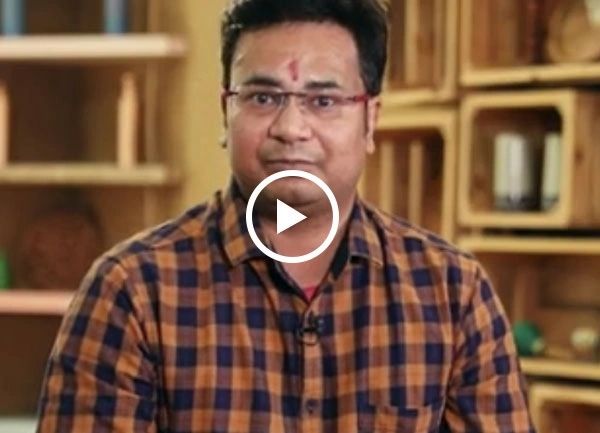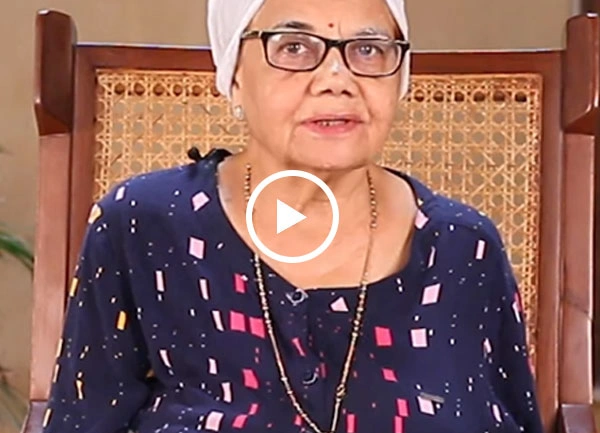 The ancient science of Ayurveda is timeless. Having survived the past 5000 years of civilisational abuse, Ayurveda remains the undisputed, the oldest accepted, traditional system of medicine in the world. And even though we live in times where information travels faster than ever, there still needs to be more communication about Ayurveda and the authenticity of Ayurvedic treatments in India and around. If you are an Indian, you can’t deny that Ayurveda has been a part of our household, for generations. But, ignorance and lack of true understanding of this traditional science, have led to a lot of misconception, negativity and misinformation around the authenticity of Ayurveda in the 21st century, downsizing it to a source of home remedies only restricted to our kitchens, for that matter.
The ancient science of Ayurveda is timeless. Having survived the past 5000 years of civilisational abuse, Ayurveda remains the undisputed, the oldest accepted, traditional system of medicine in the world. And even though we live in times where information travels faster than ever, there still needs to be more communication about Ayurveda and the authenticity of Ayurvedic treatments in India and around. If you are an Indian, you can’t deny that Ayurveda has been a part of our household, for generations. But, ignorance and lack of true understanding of this traditional science, have led to a lot of misconception, negativity and misinformation around the authenticity of Ayurveda in the 21st century, downsizing it to a source of home remedies only restricted to our kitchens, for that matter.
While the benefits of Ayurveda have been widely recognised and accepted in India for centuries, its methodologies and philosophy continue to be accepted even today, in India and the Western parts of the world. Before we delve deeper into the building blocks of Ayurveda and Ayurvedic treatment, let us clarify one fundamental golden rule that’s the base of Ayurveda;
Every human is unique, physiologically and psychologically.
This means each person has a different body and mind constitution. We will talk more about it further ahead in the blog. If you've ever been curious about the underlying principles of Ayurveda, this blog serves as a fantastic introduction. We'll delve deep into the fundamentals of this ancient medical system, exploring how Ayurveda considers the human body a complete being, capable of self-recuperation. Unlike some approaches that rely solely on external interventions, Ayurveda emphasises the body's natural ability to heal itself from within.
So What Makes Your Health Unique As Per Ayurveda?
As mentioned previously, Ayurveda sees your health as one-of-a-kind. That's also the reason for the treatments being tailored just for your case, not a generic fix for everyone. And this treatment journey begins with a clear, thorough, understanding of your Prakriti a.k.a body composition.
Now this is where it gets really interesting.
In Ayurveda, every individual is made up of three dosha - Vata (space & air), Pitta (fire & water), and Kapha (water & earth). These are the primary governing bodies inside every human being, comprising certain specific combinations of the 5 elements, which as per Ayurveda, make up the entire world - space, air, fire, water and earth. Before we break down the three doshas for you, let's first talk about the five elements and their role in Ayurveda.
What are The Five Elements of Health & Creation?
Ayurveda arises from a tradition that describes the entire physical world, including human beings in terms of these five elements,
- Space
- Air
- Fire
- Water
- Earth
It's better to consider these 5 elements are energy patterns instead of physical elements, exhibiting particular qualities. For an easier interpretation, let's map out how these elements behave in nature.
Earth is often heavy, rigid, much stable and dry. Can be represented with Dirt.
Fire is hot, mobile, dry, and sharp. The easiest example of this element in action is our Sun, the key source of warmth and heat for Earth.
Space or Sky, is clear, cool, light and vast. It's the dimension that enables the place for other things to talk form, exist and be.
Water is cold, mobile, heavy, liquid, and tranquil. Can be visualised as a vast, endless Ocean.
Air is often dry, rough, and moving. Imagine being whipped by a fast aggressive storm out of nowhere.
Now, these five elements manifest individually in nature. However, more profoundly, they all exist at all times in all things, which includes our human bodies — and each of these elements has a particular role to play.
Three Doshas - The Eyes & Ears of Ayurveda!
As hinted above, Ayurveda's philosophy revolves around the interplay of the five elements. These fundamental building blocks combine in unique ways to form the three constitutional principles of Ayurveda, known as Doshas: Vata, Pitta, and Kapha.
- Vata embodies the lightness and movement of air and space.
- Pitta reflects the transformative fire and fluidity of water.
- Kapha represents the solidity and structure of the earth combined with water's adaptability.
By understanding the core qualities of these elements and their combinations within us, we start to understand the behavioural patterns of our unique doshic framework and how it impacts our overall health. Fascinating and logical, doesn’t it seem? Let’s talk more.
So What’s Prakriti in Ayurveda?
Prakriti refers to the individual nature of each person, considered based on many a factor, apart from assessment of the doshic imbalances, of course.
It is the preliminary assessment any certified Ayurveda doctor should perform during a first-round consultation. Unlike medical checkups at contemporary clinics, an Ayurvedic consultation is slightly different and doesn’t rely on quick assessments via modern medical instruments, but instead, relies on intricate pulse (nadi) assessment techniques, along with a detailed history check of the patient, through a series of questions that interplay around factors like lifestyle choices, history of illness, genetic or hereditary contractions, and more.
This way, an experienced Ayurveda doctor or Ayurvedacharya can understand the unique nature of each patient. Case in point, each person on this planet exhibits a constitution that is specific to him or her, and movement away from that constitution creates health imbalances. And Ayurveda suggests that if such imbalances are not addressed, disease may develop. So, the early signs of imbalance serve as a wake-up call to make gentle and natural shifts in behaviour to return to a balanced state. This is usually done by making adjustments to diet, modifying daily activities, and taking some natural ayurvedic remedies for a specific period.
It's also crucial to note one more very important thing here.
Ayurvedic medicines are highly regulated by the government and other boards. These medicines are produced from naturally sourced ingredients and made using the processes mentioned in the main texts of Ayurveda - Shushruth and Charakh Samhitas. These medicines are completely side-effects free, however one must be careful, that these medicines are to be consumed, only when prescribed by a certified Ayurveda doctor and in no other case. Always remember, that self-medication can be consequential. You should let your health be in the hands of certified experts like doctors at Jiva Ayurveda.
With more than 30 years of experience in treating a plethora of chronic conditions ranging from joint pain to IBS, piles, skin diseases, infertility, sexual conditions and more, Jiva Ayurveda stands tall, offering you the best Ayurveda treatment in India. Led by renowned Ayurvedacharya Dr Partap Chauhan, Jiva Ayurveda is a one-stop, home for Ayurveda wellness, from where you only return pain-free. Experience the true healing power of authentic Ayurvedic therapies personalised as per your health condition at Jiva.
Additionally, Jiva operates a robust network of 80+ Ayurvedic clinics, the world's largest Telemedicine centre, and a GMP-certified manufacturing unit, producing over 800+ herbal cosmetics, Ayurveda medicines & OTC products. Having said that, let us move on, to understanding the fundamentals of Ayurveda a tad bit more.
Characteristics of Three Dosha’s (At A Glance)
The three doshas, as discussed earlier, are present in everyone to some degree. They are all a necessary and integral part of the body. To determine your fundamental dosha imbalances, a doctor requires an assessment of your most natural state. Considering your physical structure as well as your mental and emotional tendencies. Remember to think of what is most natural to you, rather than what you’re like when you are stressed or ill.
Now, let us dig deep into the characteristics of each of the three doshas respectively.
What are the Characteristics of Vata In Ayurveda?
A vata-predominant person usually displays the following traits.
Physique -A light, trim build, often delicate. The features (facial features, limbs, fingers, etc.) are long, slim, or narrow, and the hair is thin, wiry, or curly.
Digestion -The appetite and digestion are often variable, going up and down, yet often lean towards “eating like a bird” and constipation.
Personality- A Vata person tends to be creative, can “go with the flow” and think abstractly, and often has rapid speech with a thin, raspy, high-pitched, or crackly voice. Vata-predominant people are also prone to fear and anxiety and have trouble focusing on one thing at a time.
What are the Characteristics of Pitta In Ayurveda?
A pitta-predominant person displays the following traits.
Physique- A medium build, with average height and weight. The physical features can be sharp and fiery (red hair, for example), precise and well-defined.
Digestion- A pitta predominant person usually has a ferocious appetite, strong metabolism, and may “roar” when hungry.
Personality- A pitta nature makes one passionate, an initiator, directed, and focused. A sharp, probing intellect and the ability to focus intently can lead such people to doggedly investigate and get to the core of a matter. This same fire can also make a pitta primary person easily irritable, fussy, angry, judgmental, and critical.
What are the Characteristics of Kapha In Ayurveda?
A kapha-predominant person usually displays the following traits.
Physique- A large, stout frame is a general kapha characteristic. The features are rounder, larger, thicker, and often smoother than those with vata or pitta predominance.
Digestion- The appetite is consistent and regulated. The metabolism tends to be slow, and kapha-dominant people may accumulate weight more readily and have more difficulty losing it. As the digestion can be sluggish, the person may feel sleepy or tired after eating.
Personality- A Kapha person may be described as “down to earth” or “solid as a rock” (notice the reference to earthy qualities); there is a tendency toward being grounded, stable, patient, compassionate, and nurturing. Once a kapha grabs ahold of something, he or she holds on tight—this frequently means a person with a good memory and/or firm beliefs. These same qualities also make kapha folk prone to inflexibility, possessiveness, hesitancy toward change, jealousy, and inertia.
Having talked about Prakriti, it only makes sense for us to gradually move ahead and talk about Vikriti, another term for the doshic imbalances. In the next blog, we will talk more about the body constitution and then aim at breaking down everything you need to know about Vikriti in Ayurveda. And before you sign off, would you like to take our Free Prakriti Analysis Test? Click here to get started. Want to explore chronic treatments at Jiva? Click here to learn more.
































